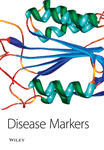Rac GTPases in Human Diseases
Abstract
Rho GTPases are members of the Ras superfamily of GTPases that regulate a wide variety of cellular functions. While Rho GTPase pathways have been implicated in various pathological conditions in humans, to date coding mutations in only the hematopoietic specific GTPase, RAC2, have been found to cause a human disease, a severe phagocytic immunodeficiency characterized by life-threatening infections in infancy. Interestingly, the phenotype was predicted by a mouse knock-out of RAC2 and resembles leukocyte adhesion deficiency (LAD). Here we review Rho GTPases with a specific focus on Rac GTPases. In particular, we discuss a new understanding of the unique and overlapping roles of Rac2 in blood cells that has developed since the generation of mice deficient in Rac1, Rac2 and Rac3 proteins. We propose that Rac2 mutations leading to disease be termed LAD type IV.




